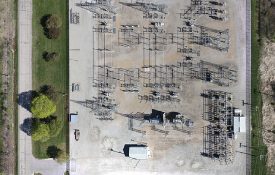Unexpected delays and overruns plague the architecture, construction and engineering industries. However, what if they are avoidable? Anticipating and out-planning the unexpected will become not only possible but practical as new geospatial technologies rapidly gain adoption, allowing organizations to spot problems and devise solutions before the first shovel hits the dirt.
Site characteristics play a massive role in how a project is designed, bid out and built. However, gaining access to assess geological conditions through dense forest cover and other physical obstacles isn’t easy. In many cases, a project may make it to the point of breaking ground with a full crew before learning of obstacles that could seriously impact or delay construction. Identifying complicated factors early on is critical to planning effectively and staying on schedule and budget. Geospatial solutions like Aerial Light Detection and Ranging (LiDAR) can streamline and simplify nearly every step of the design and build process—and increasingly transform how organizations approach large-scale projects
Addressing Pain Points in the Construction Process
Carefully evaluating the site is critical to keeping a construction project on schedule and budget. Terrain characteristics, geological features and existing structures must be considered at every stage of the process. Unfortunately, traditional methods for site surveying may be insufficient to anticipate every issue. Ground-level surveillance technologies can be tampered with or disrupted—and private properties can complicate movement.
Moreover, there are a variety of survey and measurement types—most of which provide insufficient data for a project. Land surveys can provide an accurate starting point for where abutting property lines begin and end, but they fall short at accounting for the land in between.
Download white paper to know more

